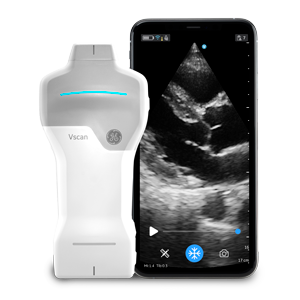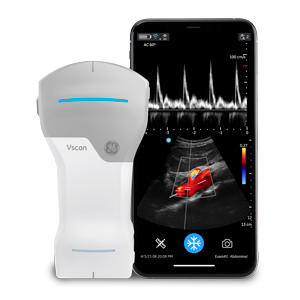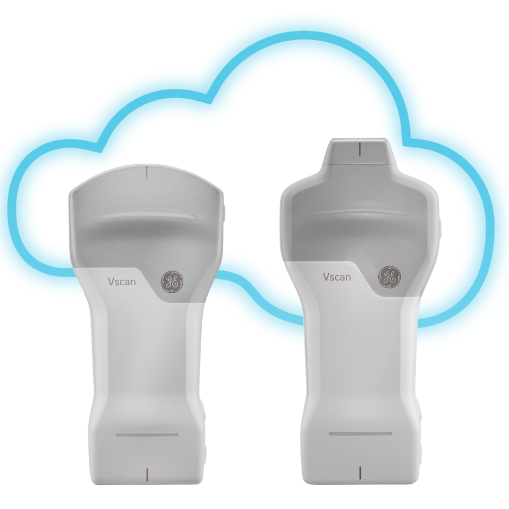
Value-based care might be a big focus in the industry but reducing healthcare costs is still a major priority for leaders who are dealing with tight margins and fee-for-service contracts as well. Solutions such as handheld ultrasound have demonstrated cost-saving benefits for both patients and providers.
A Tool to Help Lower Healthcare Costs: A Win For Both Hospitals And Patients
Hospitals are under increasing pressure under today’s health care system to provide a balance of improved health outcomes and cost efficiency for their care populations. These pressures have led effective administrators and leadership teams to seek out cost-effective solutions that don’t compromise on quality or the patient experience.
Handheld ultrasound is a portable, pocket-sized device that empowers clinicians, including cardiologists, general practitioners, OB/GYNs, primary care providers, emergency physicians and intensivists to conduct focused imaging at the point of care. Medical professionals are able to expedite the diagnosis and development of the treatment plan with the use of handheld devices. Patients are provided with an optimized diagnostic journey at a lower cost — a benefit that’s attractive as they take on a larger portion of the financial burden of care.
As an added bonus, handheld ultrasound often allows physicians to talk with patients during care, helping to increase patient engagement and to enhance the patient care experience. And handheld ultrasound offers a cost-efficient tool to aid in early diagnosis, which can help improve patient outcomes. The benefit of lowering healthcare costs together with a fast diagnosis and enhanced quality of care means that all parties involved can come out ahead.
Reducing Healthcare Costs With Handheld Ultrasound
Handheld devices reduce costs, and it’s more than simply being less expensive than traditional ultrasound models.
Handheld ultrasound devices are so small that providers are able to keep them on hand at all times. This means that providers are ready to conduct a variety of short, focused exams when appropriate, including the following clinical applications:
- Abdominal Ultrasound
- Cardiac Ultrasound
- Emergency Ultrasound
- Lung Ultrasound
- Musculoskeletal (MSK) Ultrasound
- Obstetric Ultrasound
- Primary Care Ultrasound
- Urology Ultrasound
- Vascular Ultrasound
This enables simpler workflows and enables patients to start on the path to treatment faster because they don’t need to wait for more comprehensive imaging modalities. It also enables physicians to see more patients in a day, improving patient flow. Medical institutions may be able to purchase larger quantities of handheld devices, as well, which means distribution across departments and less need for equipment sharing.
Reducing the Cost of Older Equipment With Handheld Ultrasound
As ultrasound machines age, there comes a time when they need to be replaced. Instead of being solely reliant on large, more expensive machines, though, developing a mix of ultrasound equipment is a cost-effective path forward. By incorporating handheld devices into the point of care, hospitals are able to replace older, more expensive ultrasound equipment for less. With this type of ultrasound mix, healthcare professionals gain more flexibility and capabilities while concurrently reducing healthcare costs.
Lowering the Cost of Abdominal Paracentesis Procedures
According to the Journal of Medical Economics, “The use of ultrasound guidance in abdominal paracentesis procedures is associated with fewer [adverse events].” It has also been found to be associated with “lower hospitalization costs than other procedures where ultrasound is not used.”
Savings in Thoracentesis Procedures
Another study, published in the Journal of Clinical Ultrasound, noted that “[ultrasound-guided] thoracentesis is associated with lower total hospital stay costs.” It is also associated with a “lower incidence of pneumothorax and hemorrhage.”
Cost-Effective Transthoracic Echocardiographic Imaging
A study published in Clinical Cardiology demonstrated that “pocket-sized [portable transthoracic echocardiography] provides accurate detection of cardiac structural and functional abnormalities beyond the ECG.” What’s more, the study says “the use of [portable transthoracic echocardiography] as an initial screening tool prior to [standard transthoracic echocardiography] is cost-effective, suggesting that the pocket-sized [portable transthoracic echocardiography] is poised to alter the current diagnostic strategy in clinical practice.”
Durability Helps to Reduce Costs
Another factor in reducing costs is the construction of handheld ultrasound devices such as GE HealthCare’s Vscan Air. GE HealthCare engineers designed the probe to be energy-efficient and rugged enough to withstand tough conditions like those you’d find in the field.
For example, Vscan Air has been tested to military drop standards (MIL-810G) and is IP67 rated waterproof.*
Ultrasound probes can experience quite a number of drops, and this can cause breakage, require downtime while replacements are ordered, and add costs. The Vscan Air was designed from day one with the aim of withstanding drops. This is yet another way that handheld ultrasound may help to lower healthcare costs.
Moving Forward in Lowering Healthcare Costs
Using a cost-effective ultrasound solution contributes to more efficient clinical processes and a better imaging experience for the patient. Options like handheld ultrasound should be a standard in implementing cost-focused best practices for forward-thinking healthcare organizations that prioritize increasing asset performance and reducing healthcare costs. Not only can handheld ultrasound solutions help reduce healthcare costs, access to the portable technology may even lead to a faster diagnosis and treatment decision.
Related Resources
Vscan Air probe withstand drops: tested to Military drop standards (MIL-810G). IP67 waterproof, compatible with high level disinfection techniques.






